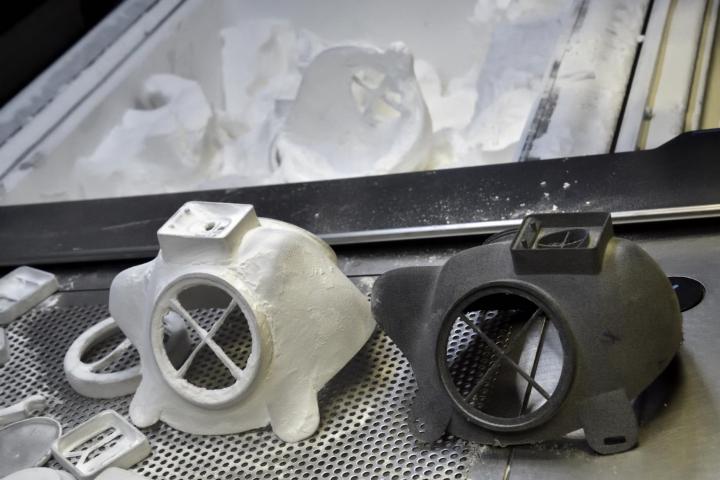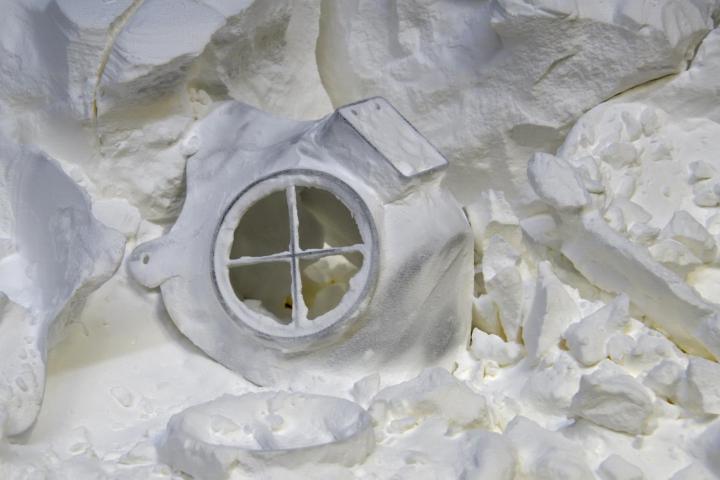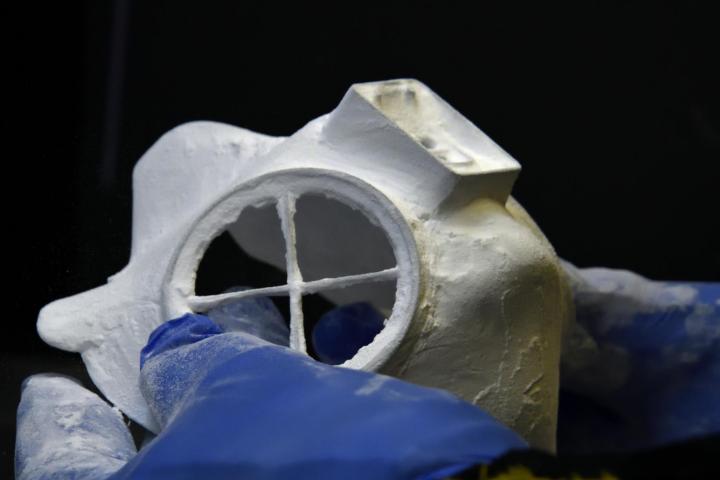
You can download files that allow you to print the mask to any HP MJF 4xxx or 5xxx printer anywhere in the world. Already 64 companies from 25 countries have taken this opportunity, most of them being from the USA, Germany, Portugal, the Netherlands, but also from Mexico, New Zealand or the United Arab Emirates. Those interested in a protective mask will receive instructions along with the data to print and build a mask that consists of several components. The 3D printer produces the body of the mask, the threaded attachment for attaching the filter and other small parts including the exhalation flap. The silicone gasket and exhalation valve membrane are made by pouring the silicone into a mold. Those interested in the half mask production can even download the mold data and produce it according to the instructions. Part of the information package is a description of the straps for attaching the mask to the head. Of course there is also a specification of the material used and recommendations regarding the filter.
"We also have a filter adapter drawing available so that anyone can attach any filter available in the country that meets the relevant filter characteristics to the mask," Dr. Pavel Burget, Head of Testbed for Industry 4.0 CIIRC CTU, adds: “It was originally intended to provide full data as open source. However, it turned out that other 3D technologies may not be safe in terms of quality. A free license for non-commercial purposes was therefore granted for a period of one month. '
The license is expected to be prolonged for the duration of the status quo caused by the COVID-19 pandemic.
"In this case, the development of the protective mask has managed to combine three basic things - a team of top researchers, state-of-the-art research infrastructure and valuable partnerships that CIIRC CTU has long had among academic and industrial organizations," sums up the rapid development of recent weeks. Vladimír Marik, Scientific Director of CIIRC CTU. “Nevertheless, it is a new experience for our institute, especially when it comes to rapid technology transfer from university to industrial production. After all, a new university start-up, TRIX Connections, takes care of it. ”
And how should a person interested in making 3D masks abroad proceed after downloading the data? First, he can create a set of 4 half masks, whether for testing, presentation or for certification in a given country - especially if the certification granted for the territory of the Czech Republic is not recognized in that country. However, there is also a set of masks of 60 pieces each for the maximum utilization of the printing device. Depending on the production model applied in the Czech Republic, the interested party can contact other partners to coordinate production and assembly in the country.
"This is a very professional product that cannot be realized without the involvement of other specialties," says Alexandr Lazarov of the CIIRC CTU research team, adding: "For example, manufacturing high-quality silicone gaskets by gravity molding requires a high level of expertise." provided by 3D Tech, while the production coordinator is 3Dees Industries, the official representative of HP 3D Printing in the Czech Republic.
The CIIRC RP95-3D respirator has received international acclaim not only because of the media coverage, but also thanks to the European institutions and innovation communities. For example, the HubHub has ranked the mask among five innovative European projects that help combat coronavirus. Communication through HP has certainly contributed to the promotion abroad. HP communicates most intensively within the Czech Republic and Slovakia, but the mask report has also been published on global channels through which other foreign media and community portals focused on 3D printing shared it. HP also communicated the message through personal profiles of management members. For example, Erika Lindauer, director of HP Inc., did so. for the Czech Republic and Slovakia, or Bernhard Fauser, vice president and director of HP Inc. for the CEE region. “HP's 3D Jet Printers with Multi Jet Fusion Technology have quickly become a helper in the fight against infection with a new type of coronavirus, thanks to the CIIRC CTU research team. This confirms the dynamic trend and importance of 3D printing in prototypes or rapid additive manufacturing, ”says Erika Lindauer, director of HP Inc. for the Czech Republic and Slovakia.
CIIRC CTU started to develop this protective device in the second half of March. A team of researchers from the so-called Testbed for Industry 4.0 CIIRC CTU, whose research infrastructure is an integral part of the European Center of Excellence RICAIP, managed to prepare the CIIRC RP95, which has been certified as a FFP3 class respirator with interchangeable external filters. The mask can be reused and produced on 3D printers anywhere in the world. The main objective of RICAIP is to build a unique research facility for the development and testing of innovative solutions for advanced and fully integrated industrial production. The protective mask project becomes the first so-called use case to verify the concept of distributed production. The development of a half mask at CIIRC CTU would not have been possible without grant support from both the EU Horizon 2020 program and the Operational Program Research, Development and Education through the Ministry of Education, Youth and Sports. The project is also co-financed with the state support of the Technology Agency of the Czech Republic under the GAMA2 program, which, like the European Commission, promptly responded to the situation and enabled the support of activities dealing with research and development topics related to the COVID-19 pandemic.
Photo: Roman Sejkot, CIIRC ČVUT

